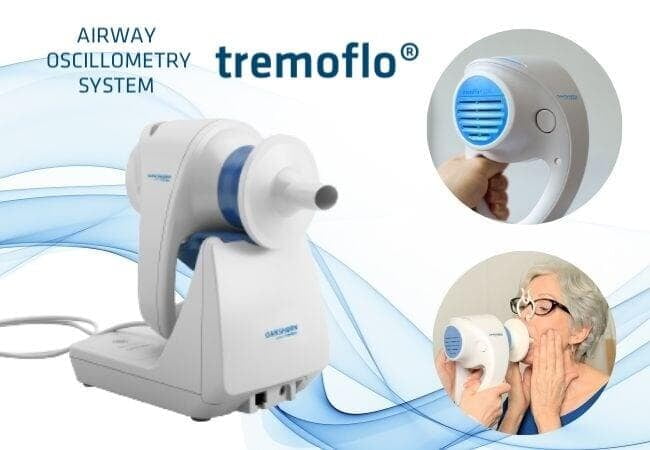By América Torres
The diagnosis of asthma is an urgent need for two main reasons. The first is that it is estimated to affect 300 million people worldwide. And the second is that asthma treatment generates high costs for healthcare institutions and patients.1
Although current asthma guidelines use both clinical criteria and spirometry-based criteria to define the severity of asthma and to control it, the reality is that a considerable number of children and adults are poorly controlled, even though they receive specialized care for the disease.2
In this article, we provide a brief overview of the challenges that specialists face in reaching a timely diagnosis of asthma and in verifying whether the treatment works. in this article, you will find scientific evidence of what oscillometry can contribute as a complementary test to spirometry.
Asthma is Underdiagnosed
Asthma is Underdiagnosed
Studies show that it is common for asthma to be diagnosed incorrectly, with an estimated underdiagnosis rate ranging from 19-73% of cases.3 Precision is crucial to prevent patients from receiving alternate diagnoses and treatments they do not need, as well as to prevent exacerbations and long-term remodeling of their airways. 3-4
Since 2000, considerable efforts have been made to develop and disseminate international guidelines on asthma. Undoubtedly, this work has contributed to improving its management worldwide, as it has allowed for the identification and treatment of new asthmatic patients. However, it may also have contributed to the increase in cases of incorrectly diagnosed asthma, which leads to excessive or outright inappropriate treatments. This increases the risk of patients suffering side effects without receiving any therapeutic benefit. 1
International Clinical Practice Guidelines (CPGs) suggest that asthma diagnosis should be based on both the presence of symptoms and objective measurements of variable airflow obstruction. Therefore, there is a huge possibility that doctors may lean towards initiating treatment in patients with asthma symptoms without first performing additional diagnostic tests. Recent studies indicate that many asthma diagnoses in primary care are based solely on clinical evaluation and/or response to treatment. 1
Spirometry is the gold standard for diagnosing asthma5 in children and adults, but there is another complementary test that can be very useful: oscillometry. Before explaining the advantages of practicing both tests, let's take a moment to understand why combining them is ideal.
The Missing Piece for Proper Asthma Diagnosis
The Missing Piece for Proper Asthma Diagnosis
One of the causes of asthma being misdiagnosed in children and adults is the undervaluation of peripheral airways (PA) (luminal diameter ≤ 2 mm). These are the main sites of obstruction and inflammation of the airways in those with persistent asthma. Therefore, administering standard therapies, consisting of inhaled corticosteroids of large particles (ICLP), may be insufficient to reach these sites. 2
PA have been disregarded, mainly due to their inaccessibility with traditional tests. However, there is a new non-invasive technique for accurately assessing them: oscillometry (OS). 2
Oscillometry is a technology that measures lung mechanics during normal breathing. It measures airway impedance (i.e., the resistance of the airways to detect obstruction in the central airways and PA) and reactance (which measures the elasticity of PA). In fact, it has recently been shown to be a useful complementary method for detecting and monitoring both asthma and other respiratory diseases.2
Since oscillometry only requires the patient to breathe normally on the oscillometer's mouthpiece, it is an ideal test for older adults, young children, patients with mental disabilities, or those who have difficulty understanding and following instructions.
The Solution for Obtaining a Precise and Accurate Asthma Diagnosis
The Solution for Obtaining a Precise and Accurate Asthma Diagnosis
As we have just seen, small airways play a central role in asthma. This means that oscillometry could be the key to complementing spirometry; therefore, the combined use of these tests as part of routine diagnostic work and asthma patient management would be very useful. This could greatly benefit patients in two ways:
Treatment Selection. Not all inhaled therapies effectively reach small airways, which may contribute to treatment ineffectiveness, especially in patients with disease in those airways. Oscillometry technology could help identify asthma patients who would benefit from small particle aerosols, which penetrate deeper into peripheral airways. 5,7
Monitoring. OS is a useful tool for evaluating therapeutic response and predicting exacerbations.5,8 Additionally, OS measurements correlate significantly with asthma control, including patient-reported outcomes such as ACQ (Asthma Control Questionnaire) scores. Furthermore, this test can detect deterioration in peripheral airways, even in patients considered to be well-controlled. 2,7
SCHILLER has developed tremoflo®, an Airwave Oscillometry system that evaluates lung function by overlaying a multifrequency wave on the patient's spontaneous breathing to calculate airway resistance and reactance.
Oscillometry + Spirometry
Asthma is a common and chronic respiratory disease that affects both children and adults alike. It is characterized by variable respiratory symptoms and limitation of expiratory airflow that is reversible, either spontaneously or in response to therapy. Despite the availability of effective therapies, the diagnosis and ongoing management of the disease remain a challenge.
The SCHILLER-Ganshorn pulmonary function line includes the airway oscillometer, tremoflo®, and the ultrasonic spirometer, SpiroScout. When doctors use these two complementary tests, they gain more information about the patient's lung health. This is invaluable because it allows them to diagnose asthma accurately and provide patients with appropriate treatments that improve their quality of life.
Click the button to download the tremoflo®and SpiroScout brochure.
REFERENCES
[1] Contoli, M., & Papi, A. (2010). When asthma diagnosis becomes a challenge. European Respiratory Journal, 2010; 36: 231–233 DOI: 10.1183/09031936.00053010
[2] Stanley P. Galant, MD., Tricia Morphew, MSc. Adding oscillometry to spirometry in guidelines better identifies uncontrolled asthma, future exacerbations, and potential targeted therapy. Annals of Allergy, Asthma & Inmunology. Volume 132, ISSUE 1, P21-29, January 2024. https://doi.org/10.1016/j.anai.2023.08.011
[3] Kavanagh J et al. Breathe (Sheff). 2019;15(1):e20-e27.
[4] Global Initiative for Asthma. Global strategy for asthma management and prevention, 2023. Updated July 2023. Available from www.ginasthma.org
[5] Desiraju K, Agrawal A. Lung India. 2016;33(4):410-6
[6] Lundblad LKA et al. Can J Respir Crit Care Sleep Med. 2021;5:54-68.
[7] Cottini M et al. Clin Mol Allergy. 2021;19(1):7.
[8] Galant SP et al. Ann Allergy Asthma Immunol. 2017;118(6): 664-71.




